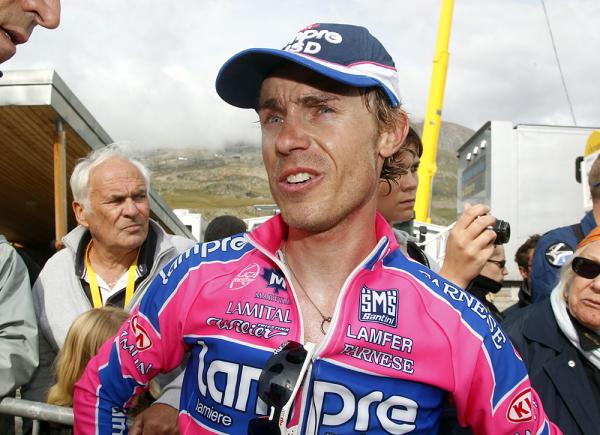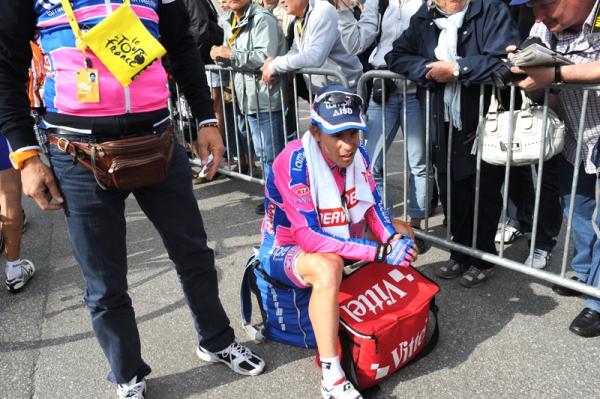Cunego returns to one-day action in San Sebastian
Italian confident after strong Tour de France


Fresh from finishing 7th overall at the Tour de France, Damiano Cunego (Lampre-ISD) returns to action at the Clasica San Sebastian high on confidence.
The Italian opted to spend the week at home in Cerro Veronese rather than contesting post-Tour criteriums and arrives in Spain hoping to shine on a course well-suited to his characteristics. However, Cunego warned that the climb of the Jaizkibel is not always as decisive as it ought to be.
“Technically there shouldn’t be problems, but there have always been strange races [at the Clasica San Sebastian],” Cunego told Gazzetta dello Sport. “After the Jaizkibel, there have been riders who’ve gotten back on and then counter-attacked and it’s all over… But maybe this will be the right occasion for me.”
The second half of Cunego’s season will see him focus largely on one-day races, but he was pleased to reiterate his credentials as a stage racer at the Tour de France. Winner of the Giro d’Italia in 2004, Cunego had never scaled such heights over three weeks since but he explained that preparing specifically for the Tour had paid rich dividends.
“It did me good to work at altitude, it did me good to lose a couple of kilos,” Cunego said. “I’ve realised that I can’t do the spring classics and the Giro in the same year at a high level.”
Already a triple winner of the Tour of Lombardy, Cunego has a fourth triumph in the Race of the Falling Leaves in his sights this October. “I now have clear ideas for the end of the season, where I will aim straight for the Tour of Lombardy,” he said.
Cunego also acknowledged that he will have to up the ante once again for 2012. “7th place at the Tour was hailed as a good result this year but it might not be next year.”
Get The Leadout Newsletter
The latest race content, interviews, features, reviews and expert buying guides, direct to your inbox!
Following in Evans’ footsteps at the Mapei Centre
Lampre-ISD manager Roberto Damiani is enthusiastic about Cunego’s return to form, and is hopeful that he can follow in the footsteps of one of his former riders.
“He must take Cadel Evans himself as an example,” Damiani said. “Up until the age of 31, even though he was already a very consistent rider, he was considered a loser. Then he won the Worlds at 32, a Tour at 34 and put everything to rights.”
Like Evans, Cunego’s training is planned by the Mapei Centre in Castellanza. He began his collaboration with the centre last autumn, after a season in which he failed to land a win of any description.
“The first evaluation was an endurance test and that gave us confirmation of his good base values,” coach Andrea Morelli said. “Values which are similar to Evans’ in certain respects, in that he is a rider suited both to Classics and Grand Tours.”
Given his potential in a wide variety of races, Cunego admitted that he had spread himself too thinly in 2010, and one of the key changes he made ahead of his season was to put together a leaner and more focused racing programme. Cunego was also encouraged to change his climbing style, particularly on longer ascensions.
“We changed the way Cunego tackled resistance climbs, lowering his cadence,” Morelli said. “Then we worked on his speed with sprints and variations in rhythm behind a scooter to give him back the characteristics that made him able to win from small groups.”
Perhaps the most crucial change was to Cunego’s weight, however. With slight changes to his diet, the Italian has lost 5kg since his first visit to the Mapei Centre in October. He now has an in-form weight of between 58 and 58.5kg, something which made all the difference on the long climbs of the Tour de France.
Somewhat unusually for a Grand Tour rider, however, Cunego does not race or train using a power-meter, a situation which Morelli hopes will change in the off-season.
“There’s a technical problem with the team that I hope will be resolved as soon as possible,” Morelli said. “Lampre, perhaps for sponsorship reasons, don’t use instruments to measure power. And that data, especially from races, is real data, and thus particularly important.”